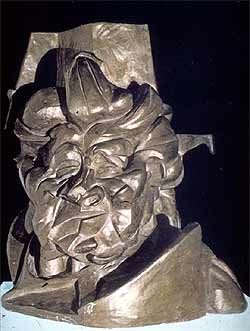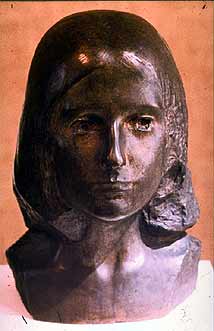

Page 3 of 4
Read the text and follow the link below then move on to page 4.
3. Hollow casting

Above, Umberto Boccioni, portrait of his mother Antigraziosa. An Italian 20th century bronze sculpture. (1913).

Above, Constantin Brancusi, pride. A Romanian/French 20th century bronze sculpture. (1905).
The traditional way of making hollow works
is the 'lost wax', or cire perdu process. This process usually
involves many complicated steps, but the simplest procedure is to coat
the interior of the plaster mould with wax, with the interior space filled
with the original model (or rough clay), using pins to keep the inside
and outside forms in position. The form is then heated so that the wax
melts and drains out through hollow tubes called runners, leaving a narrow
gap between the mould and the interior form. Into this gap, molten metal
is poured until the space is filled. For a large sculpture, this might
be done in sections, which are joined together after casting. Once the
mould is broken away, the sculptor cuts off the runners (and also the
risers which allowed hot gases to escape), tidies up any blemishes, and
adds any engraved details required. Bronze can be finished to create a
highly polished golden surface, but over time it acquires a rich patina,
much darker or greenish in colour. Modern sculptors often create this
effect right away by the application of acids. Click
here to see a diagram which illustrates the lost-wax process.
It is possible for the sculptor to preserve the mould, or the model from which it was taken, so that the process can be repeated. It is therefore common to have more than one cast of a bronze sculpture.